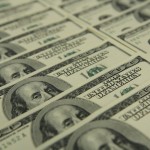The loonie, as the Canadian dollar is best known, weakened against its US counterpart to the lowest level in more than three years, following the statement of Stephen Poloz, Governor of Bank of Canada.
Having reached a session high at 1.0845 at 05:25 GMT, USD/CAD traded at 1.0843 at 10:25 GMT, gaining 0.20% for the day. Support was likely to be received at January 8th low, 1.0774, while resistance was to be met at May 25th 2010 high, 1.0853.
The BoC Governor, Stephen Poloz, said yesterday in an interview broadcast by the Canadian Broadcasting Corporation, that even though he has the option to cut rates in order to prevent deflation, the best choice is to keep them unchanged, until data dictates otherwise. The Canadian Consumer Price Index has remained below the central bank target of 2% for 19 straight months.
“It means the Canadian dollar is less attractive as an alternative investment destination, it may be this is feeding on itself a little bit as investors start to pull away from Canadian assets.” said Shaun Osborne, chief currency strategist at Toronto-Dominion Bank, cited by Bloomberg.
Futures of crude oil, the nations largest export, plunged 1.5% to reach $92.26 a barrel in New York, the weakest level since November 29th.
Earlier in the week the loonie was pressured by downbeat reports.
On Tuesday, a report by the Business and Purchasing Management Association, revealed that the Canadian economic activity, with its corresponding PMI unexpectedly contracted to 46.3 in December from 53.7 in the previous month. Analysts had forecast that the index will rise to 55.0.
A separate report by Statistics Canada revealed the nation’s trade deficit widened to 0.94 billion Canadian dollar in November, while analysts had expected the trade deficit to narrow to 0.15 billion Canadian dollars. In October the Canadian trade deficit was $0.91 billion Canadian dollars.
Investors turned their attention to the upcoming release of data on the number of new housing starts in December, accompanied by reports on the number of building permits issued in November and an index that measures the change in selling prices for new homes.
Meanwhile, yesterday, Fed minutes revealed decreasing economic benefits from the bond-buying program, which accompanied with recent upbeat data, increased bets that Fed policy makers might extend reductions in their monetary stimulus program in the near future.
Investors awaited the US Labor Department to publish a report on the number of non-farm payrolls for December, due to be released tomorrow. According to the median analysts’ forecast, employers probably added 195 000 workers last month, down from 203 000 in November. Yesterday, a report by the ADP research institute revealed the US private sector added 238 000 workers in December, the most since January 2012, defying analysts’ projections of a decrease to 200 000 from 215 000 workers in November. The ADP report is calculated according to the same methods the Bureau of Labor Statistics uses and is published every month, two days before the official BLS employment rate statistics.
The greenback received support on Tuesday, after the US Commerce Department reported that the US trade deficit narrowed to $34.25 billion in November, defying analysts’ projections that the trade deficit will widen to $40.00 billion. In October the US trade deficit was downwardly revised from $40.64 to $39.33 billion.
Data showed that the US imports declined 1.4% to $229.1 billion, while exports rose 0.9% to a record high $194.9 billion.
According to the median estimate of economists surveyed by Bloomberg on December 19th, the Federal Reserve may reduce the purchases in $10 billion increments over the next seven meetings, before ending the program in December 2014.
Elsewhere, AUD/USD touched a session low at 0.8866 at 2:10 GMT, after which consolidation followed at 0.8878, falling 0.25% for the day. Support was likely to be received at January 2nd low, 0.8843, while resistance was to be met at January 8th high, 0.8952. The Australian dollar has depreciated 16% against the greenback during the past 12 months, or the largest drop after the Japanese yen among the group of ten developed-nation currencies.





